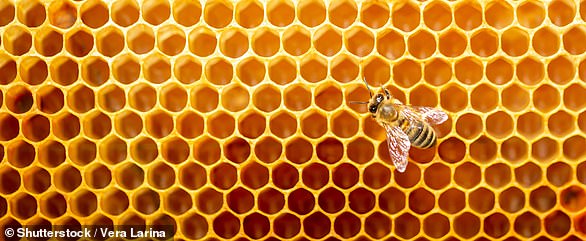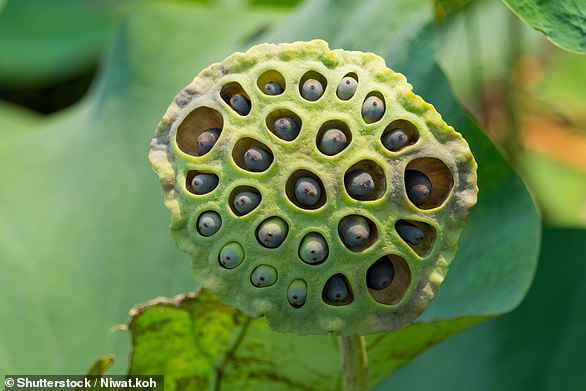Does looking at honeycomb make your skin crawl? Take the test to see if you have ‘trypophobia’. Experts reveal the internet fuels our fear of small holes
If just looking at honeycomb is enough to make your skin crawl, you may be suffering from trypophobia.
Trypophobia, or the fear of small holes, only came to scientists’ attention in 2013, but experts now estimate that 10 percent of people suffer from it.
The scientists who first identified the condition now believe the internet could be responsible for fueling this phobia.
Researchers from the University of Essex found that people were more likely to become ‘trypophobic’ if they had heard about the condition online or on social media.
So, do you have trypophobia? Scroll down to take the test and find out.
If pictures of honeycomb make your skin crawl, you may have a condition called trypophobia. Researchers now say the internet is making this fear more common (stock image)
In the study, researchers surveyed 283 people aged 19 to 22 who were tested for their level of trypophobia.
To see if the participants had the condition, they were shown images of a lotus seed pod and honeycomb, which are often said to cause trypophobia.
Participants were then asked 17 questions from the standard Trypophobia questionnaire, rating how strongly they felt different reactions.
These include common symptoms of trypophobia such as ‘panicking or screaming’, ‘feeling sick or nauseous’ or ‘skin crawling’.
To see if you have the same condition, you can take the test below by clicking ‘start’ and following the on-screen instructions.
Be warned: This test contains some images that you may find disturbing if you experience trypophobia.
For an alternative test, you can also find the Trypophobia Questionnaire used by the researchers at the bottom of this article.
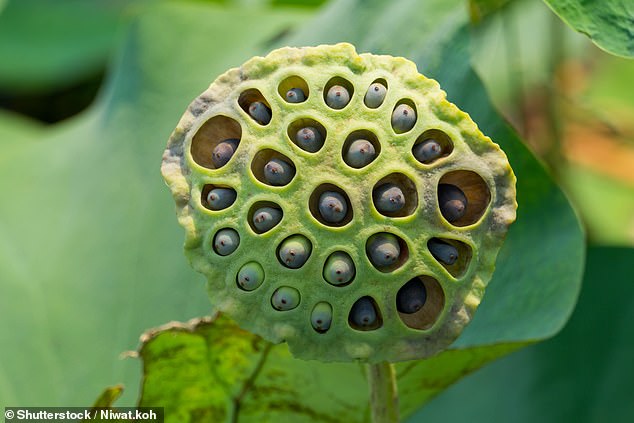
Researchers tested participants by showing them images of a lotus seed pod like this one. Those who had heard of trypophobia were more likely to find this image disturbing (stock image)
The researchers found that those who had already heard of trypophobia were more bothered by images of holes and were more likely to become trypophobic.
Their results support the idea that trypophobia is a socially learned fear, and not something we are born with.
Trypophobia is quite unique among psychological conditions in that it only emerged very recently and appears to have first developed online.
In fact, the name “trypophobia” was invented in online chat rooms and not through any scientific research.
It is not yet a medically recognized condition, but since it was first investigated in 2013 it has spread widely through news articles and online memes.
In their article, published in the Quarterly Journal of Experimental Psychologythe researchers suggest that social media awareness could contribute to the spread of the condition.
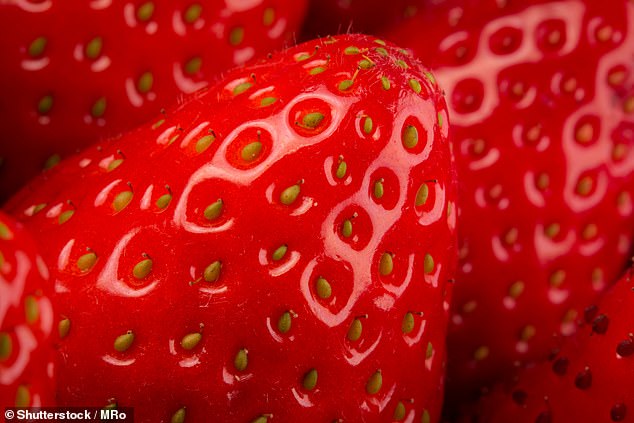
Tightly packed bumps or holes like these strawberry seeds were seen as more disturbing by women and young people who typically spend more time on social media (stock image)
The researchers point out that aversion to images of holes was more common among women and young people who typically spend more time on social media.
Additionally, 64 percent of participants had heard about the condition through social media.
Just as we must learn to fear rats or snakes, the researchers suggest that social media teaches people to fear clustered holes.
However, lead researcher Dr Geoff Cole told MailOnline: ‘Social learning contributes, it is not the only explanation.’
Of those diagnosed with trypophobia, 24 percent had never heard of the condition.
This suggests that there may be a few people who get this fear from elsewhere before spreading it to others via the Internet.
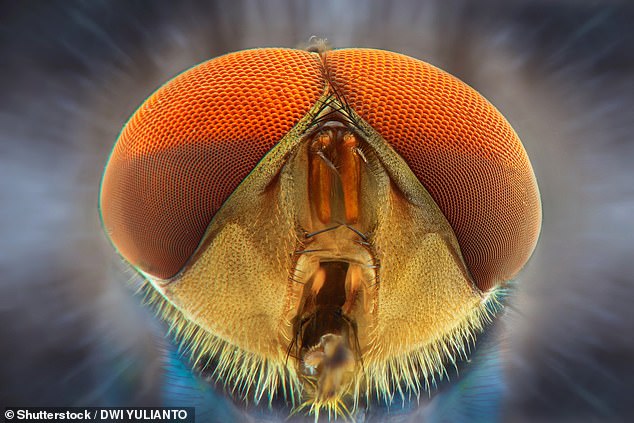
The researchers suggest that some people have an innate fear of structures such as insect eyes, which they spread to other people via the Internet (stock image)
Dr. Cole says, “They have trypophobia and then discuss it on various web forums.
‘Other people then read these and are disgusted with: ‘Oh yes, I’ve never thought of clusters of holes, they are really terrible to look at.’
Researchers have proposed three theories to explain why trypophobia might arise outside the Internet.
Dr. Cole’s original 2013 suggestion, called the aposematism theory, points to the similarity between patterns that cause trypophobia and the patterns of dangerous animals.
The patterns on poison dart frogs, snakes and animals such as the blue-ringed octopus can all cause trypophobic reactions.
This suggests that the fear may be an instinctive response to traits common to dangerous animals.
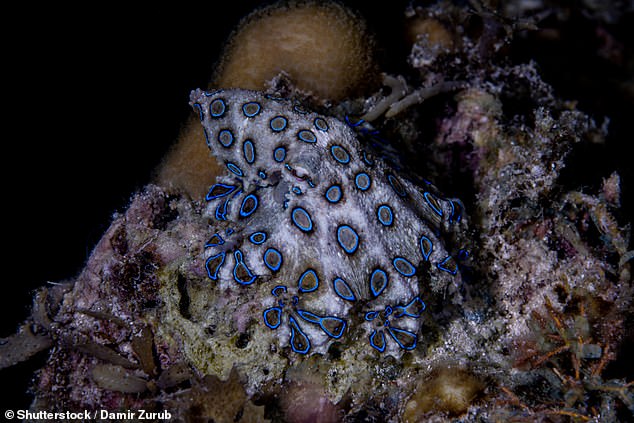
Some researchers point out that there is a similarity between trypophobic images and the patterns of venomous creatures such as the blue-ringed octopus (stock image)
A second theory, known as the pathological theory, states that trypophobia is caused by a similarity to skin diseases.
Decay, disease, or parasitic infection can cause similar tightly packed holes or bumps, like those that cause anxiety in people with trypophobia.
Some researchers suggest that the phobia may be an evolved tendency to avoid skin diseases and other infections.
In support of this theory, some point out that the responses tend to become much stronger when trypophobic patterns are applied to human skin digitally or with makeup.
Finally, some researchers propose an alternative suggestion, the so-called vision stress theory.
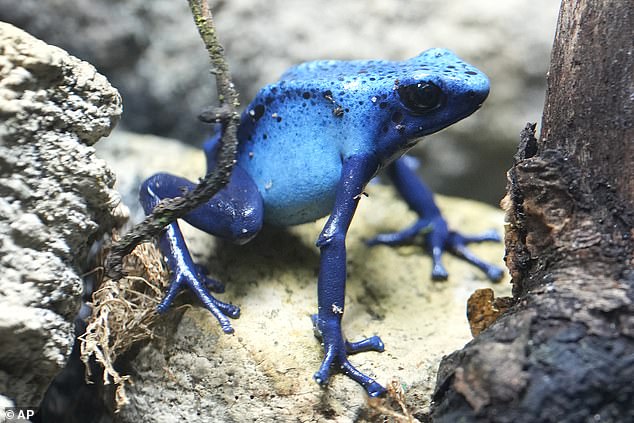
The fear of little dots and holes could be an evolutionary defense against dangerous animals that continues to this day (stock image)
Rather than pointing to an evolutionary defense, some researchers suggest that trypophobia serves no purpose and is instead caused by the brain being overwhelmed by stimuli.
When people see trypophobic images, studies show that blood flows to the visual processing areas of the brain and away from the decision-making areas.
This could indicate that the brain simply does not process these patterns properly and that is why some people feel extremely sad when they see them.
However, if you find yourself suffering from trypophobia, there is still some hope.
Dr. Cole told MailOnline that he used to suffer from trypophobia, but is now completely desensitized to trypophobia images because he has looked at them for so long.’

